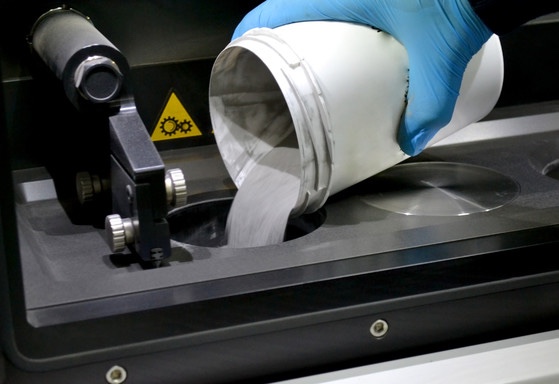The National Institute of Standards and Technology (NIST), an agency within the US Department of Commerce (DOC), has issued a notice soliciting participants in its recently formed Metal Additive Manufacturing Powder (MAMP) Consortium. The group’s work will begin in July, 2023, and the NIST will accept qualified members to participate on an ongoing basis.
The purpose of the MAMP Consortium is to bring together experts from industry, academia, standards organizations, etc., to collaborate on developing “pre-competitive measurement science and standards” related to metal powders used in 3D printing. Members of the MAMP Consortium will need to sign a Cooperative Research and Development Agreement (CRADA) (with some exceptions, subject to NIST’s discretion).

Per the notice for the MAMP Consortium on the Federal Register website, “Completed letters of interest or requests for additional information about the Consortium can be directed via mail to the Consortium Manager, Dr. Shawn Moylan, Intelligent Systems Division of NIST’s Engineering Laboratory, 100 Bureau Drive, Mail Stop 8220, Gaithersburg, Maryland 20899, or via electronic mail to AMPowderConsortium@nist.gov, or by telephone at (301) 975-4352.”
Additionally, for further information, potential participants can contact, “J’aime Maynard, TPO Agreements Officer, National Institute of Standards and Technology’s Technology Partnerships Office, by mail to 100 Bureau Drive, Mail Stop 2200, Gaithersburg, Maryland 20899, by electronic mail to Jaime.maynard@nist.gov.”

In this initial phase of the group’s activities, which is expected to last up to five years, participants will be required to contribute $25,000 to the organization — “or equivalent in-kind contributions”, presumably meaning resources and/or labor devoted to the research at hand. To begin, the Consortium will be focused above all on qualifying materials for laser powder bed fusion (LPBF) and directed energy deposition (DED) processes.
As I pointed out last year in a post about the ASTM’s International Conference on Additive Manufacturing (ICAM), the business trajectory that the AM sector takes over the next decade or so “will be signaled far in advance by the state of the sector’s ability to standardize as it scales up.” In other words, as it takes shape, the work done by NIST and other similar groups will, as a whole, constitute one of the most useful roadmaps for gauging in advance where the 3D printing market is headed.
This will be especially true in coming years concerning metal AM, where a more conscious and accelerated effort will be required to sufficiently universalize the underlying technological processes and inputs. Thus, $25,000 might seem like a steep fee for membership, but it will almost certainly be an investment with a uniquely high rate of return for whoever can afford it. Moreover, although direct participants will of course benefit the most, the entire industry should eventually reap the gains of the MAMP Consortium’s activities.
Subscribe to Our Email Newsletter
Stay up-to-date on all the latest news from the 3D printing industry and receive information and offers from third party vendors.
You May Also Like
World’s Largest Polymer 3D Printer Unveiled by UMaine: Houses, Tools, Boats to Come
The University of Maine has once again broken its own record by unveiling the largest polymer 3D printer in the world. Surpassing its 2019 achievement, the new Factory of the...
Changing the Landscape: 1Print Co-Founder Adam Friedman on His Unique Approach to 3D Printed Construction
Additive construction (AC) is much more versatile than it seems, at first: as natural as it is to focus on the exciting prospect of automated home construction, there’s far more...
US Army Corps of Engineers’ Megan Kreiger on the State of Construction 3D Printing
Despite last year’s gloomy reports about the financial state of the additive manufacturing (AM) industry, there’s no doubt that we’re actually witnessing the birth of a sector rather than its...
Profiling a Construction 3D Printing Pioneer: US Army Corps of Engineers’ Megan Kreiger
The world of construction 3D printing is still so new that the true experts can probably be counted on two hands. Among them is Megan Kreiger, Portfolio Manager of Additive...


































